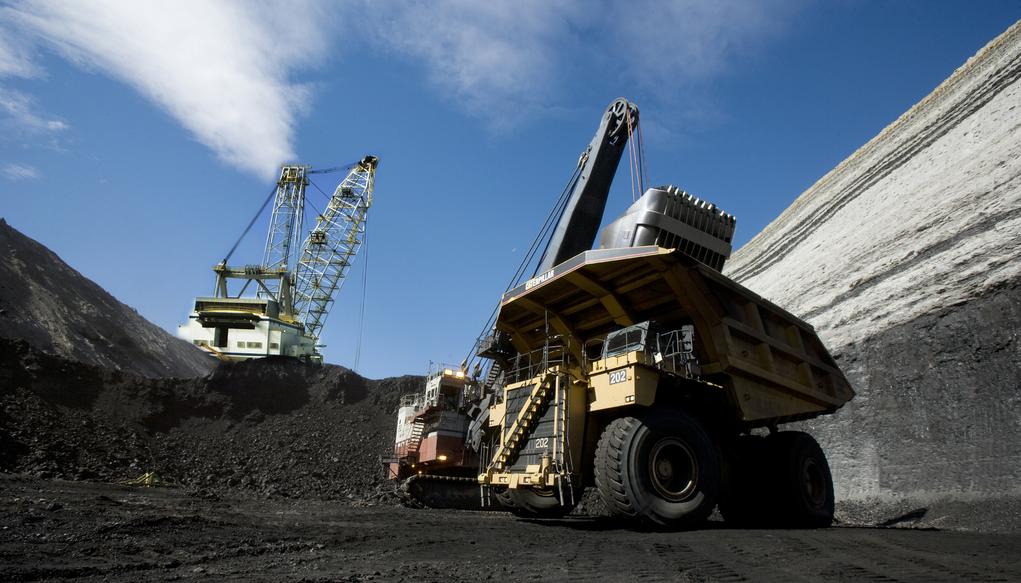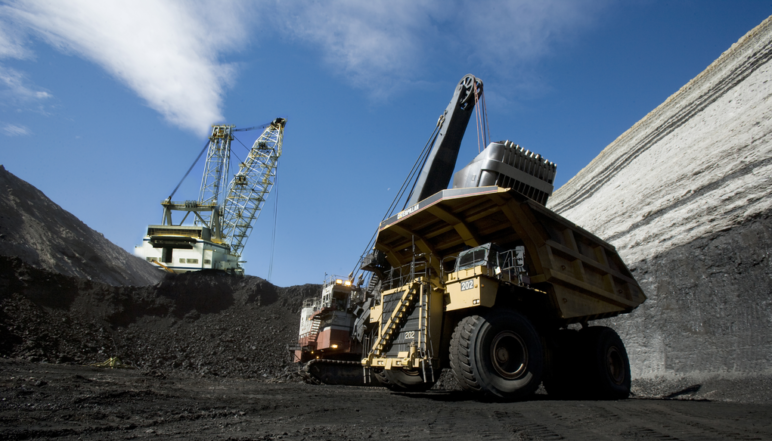Asia’s formerly red-hot coal market has cooled off, making the costly new mine a financial dud.
Another month, another coal export project down the tubes. This time it’s the proposed Chuitna mine in Alaska, a controversial export project launched a few years ago near the peak in the Pacific Rim coal bubble. After submitting several thousand pages of permitting documentation, the project backers had no choice but to shelve the project after the main investor pulled out—no doubt disheartened that Asia’s formerly red-hot coal market has cooled off, making the costly new mine a financial dud.
It’s yet another sign that West Coast coal export projects—once a Wall Street darling—are now on the ropes. Just last month Cloud Peak Energy, a major coal producer in the vast Powder River Basin in Montana and Wyoming, revealed that it had jettisoned its long-term commitments to Asian exports. The company paid some money to exit its long-term shipping contracts, while simply abandoning its property interest in the now-canceled Gateway Pacific terminal outside of Bellingham, Washington.
Cloud Peak’s decision to withdraw from exports raises an important question: what will happen to the mines that Cloud Peak once counted on to supply its export ambitions?
For years Cloud Peak has sourced its export coal from the company’s Spring Creek mine in southern Montana. A few years back, when the company envisioned that it could ship tens of millions of tons of coal per year to Asian power plants, Cloud Peak started to develop two new export-mines near Spring Creek: the Youngs Creek mine in northern Wyoming, and the Big Metal project on Crow Nation territory in Montana.
But the collapse of Asian markets has placed all three of these mines in jeopardy.
The Spring Creek mine could be in for some rocky times starting in 2019. Cloud Peak still expects to export 5 million tons of Spring Creek coal in 2017 and 2018—but after that, the company will likely dip in and out of the export markets, shipping coal overseas only when prices are high. Meanwhile, Spring Creek only has a handful of domestic customers, many of whom are closing shop in the next 8 years:
- One burner at Washington’s Centralia coal-fired power plant will close in 2020, and the other in 2025.
- Detroit Edison is shuttering its St. Clair power plant by 2023.
- Two small generating units at the Clay Boswell plant in Minnesota will close by the end of 2018.
- North Dakota’s Stanton power plant will close next month.
- The Presque Isle power plant in Michigan will close by 2020.
Several other coal plants that used to purchase Spring Creek coal have already closed. All told, about half of the generating capacity at the mine’s regular customers will be out of service by 2025. Spring Creek production already fell by nearly half between 2010 and 2016, but the combination of shrinking export opportunities and a collapsing domestic customer base could squeeze Spring Creek production even further.
Cloud Peak may have few options for preventing the collapse of Spring Creek production. In the company’s last investor call, Cloud Peak’s CEO admitted that the company had already started to fish around for additional domestic customers for Spring Creek coal. But finding new buyers could be an uphill battle: Spring Creek coal is high in sodium, which can corrode power plant boilers—meaning that few domestic power plants can use significant amounts of the coal. Just a few years ago, the company’s CEO admitted that the domestic market for Spring Creak coal is “finite,” which made it impossible for the company to switch the mine’s export sales over to domestic markets.
Worse, all of Cloud Peak’s rivals—particularly the super-giants newly emerging from bankruptcy—are gearing up for a fierce battle for the shrinking pot of domestic customers. Just yesterday, Bloomberg reported that the CEO of Peabody Energy, which just emerged from bankruptcy after writing off $5 billion in debt, believes that boosting market share is one key to the company’s long-term success. So even as Cloud Peak is hoping to find new buyers for Spring Creek coal, all of its low-cost rivals are doing the same thing.
With Spring Creek already staring at a bleak future, it’s hard to see why Cloud Peak would rush to develop its two nearby mining projects. At a minimum, reduced demand for Spring Creek coal will allow the mine’s existing reserves to last a lot longer; at worst, Cloud Peak could decide to close Spring Creek well before it exhausts the mine’s remaining coal. Either way, the decline in Spring Creek’s market will likely prod Cloud Peak to put the Youngs Creek and Big Metal projects on the back burner.
But there’s one more reason for Cloud Peak to delay developing the new mines: the Administration’s recent decision to reopen federal coal to new private leases. As Reuters and Bloomberg have pointed out, the US coal industry is swimming in excess reserves, and has little appetite for new federal coal. There hasn’t been a successful federal coal lease in the Powder River Basin since 2012, and the last two coal leases offered in the Powder River Basin both failed: one received no bids, and the other received a single bid that the BLM rejected as too stingy. Nonetheless, opening up federal coal leasing will create even more low-cost competition for Cloud Peak’s new mines.
Ironically, then, the steps the administration is taking to please the coal industry may actually undermine Cloud Peak’s plans for the Northern PRB. And that irony has a cruel streak. Interior Secretary Ryan Zinke has repeatedly pointed to the plight of the Crow Nation—which depends heavily on revenue from coal mines on tribal land—as justification for his pro-coal stance. And yet his decision to lift the coal leasing moratorium may actually have boosted the prospects of the Crow’s fiercest competitors, undermining his promise to help the nation get more of its coal to market. It’s yet another demonstration that the new administration has made promises to coal country that it has neither the ability nor the intention to fulfill.











Jessie Dye
Thank you for this excellent analysis. Our religious colleagues in Montana cite the Crow as the reason to support coal. How are they doing economically compared to the Northern Cheyenne, their neighbors, who have so courageously rejected coal mining as a way forward? What are the economic options for Crow when Cloud Peak finally meets its maker?